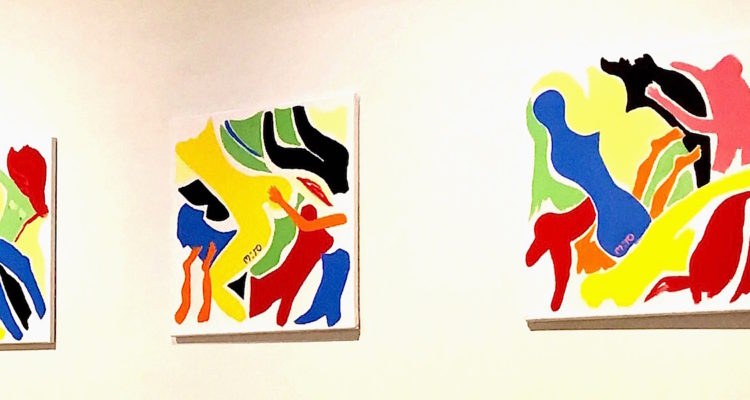By Stephen Glass
In his recent exhibition at Artifact a Swiss artist Miro Frei displayed work which is both delicate and bold. His medium-size oil, pastel and acrylic paintings on paper and canvas not only recognize the whimsical as part of a contemporary painterly attitude, they also show an affection for the enigmatic and the unsaid. At the same time, we can see that Frei operates in the cusp between abstraction and figuration. His floating figures bear a resemblance to cut-outs forcing the imagery’s audience to make sense of hidden shapes and emotional affinities.
Like so much of today’s art, Frei’s paintings fall in between categories of style. This sense of not belonging to any particular movement or school derives from the increasingly open situation painting finds itself in today. The artist successfully negotiates his place in the midst of a fallout resulting from extraordinary freedoms; his sense of form enables him to proceed down the path of self-exploration, which his paintings record. In a way, it makes sense that a contemporary artist such as Miro Frei would emphasize color and shape, which work as both formal structure and spiritual metaphor in the face of an ever-more fragmented society.
The ambivalence of definition in Frei’s work allows us to contemplate on the various meanings of his images; as we have noted, he creates a middle ground between the nonobjective and the visually describable. Part of his appeal lies in its juxtaposition of indeterminate meaning and precise delineations of form, as well as the ability to combine content and form in a seamless esthetic application. For this reason, his paintings come across as ethereal offerings of a reality that is sharply imagined, without which we would be looking merely at illustrations. Miro Frie’s art is larger than that, giving us insight into conditions that first intrigue and then convince us that the artist’s imagery shapes our perception and our minds.
